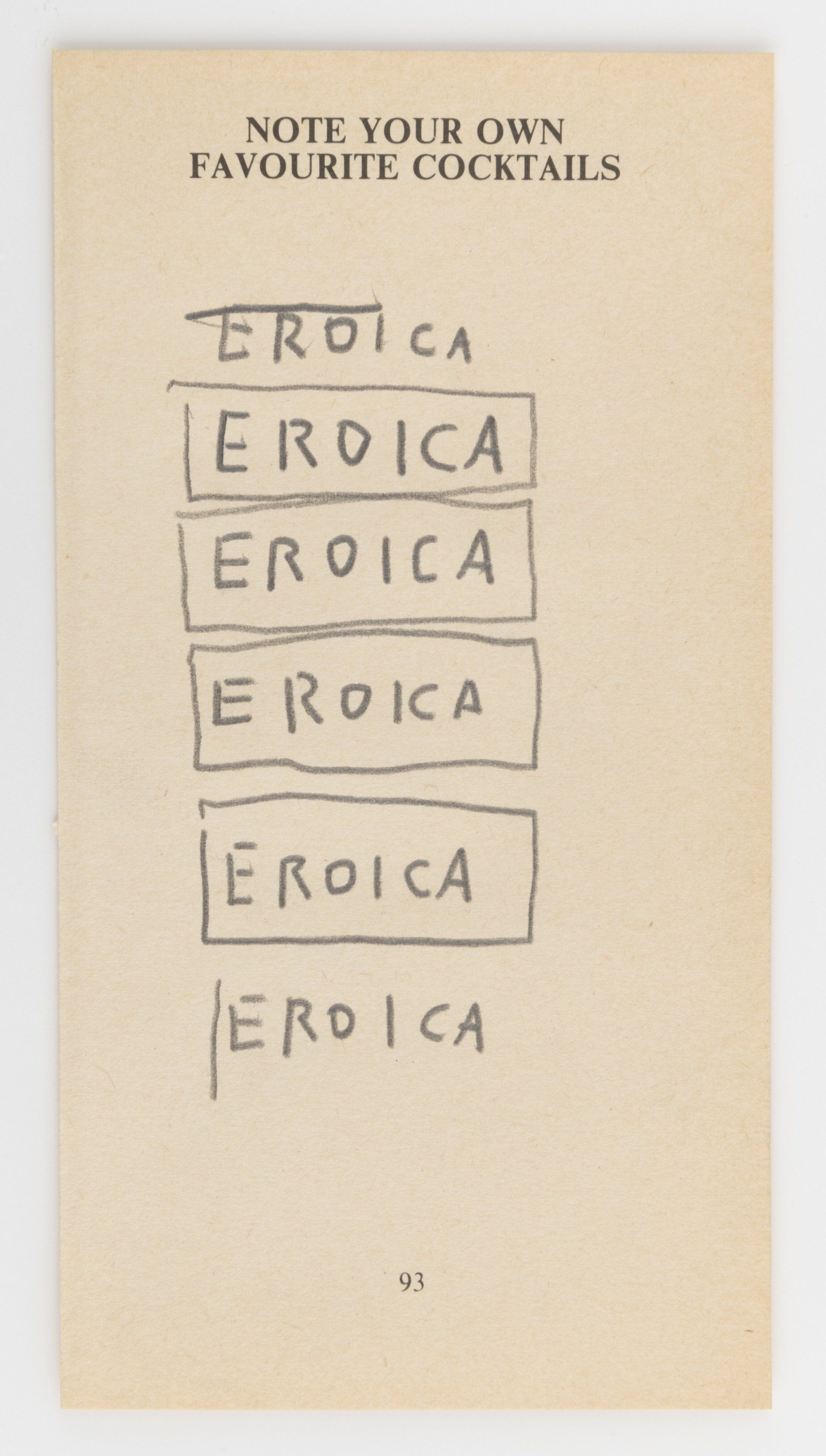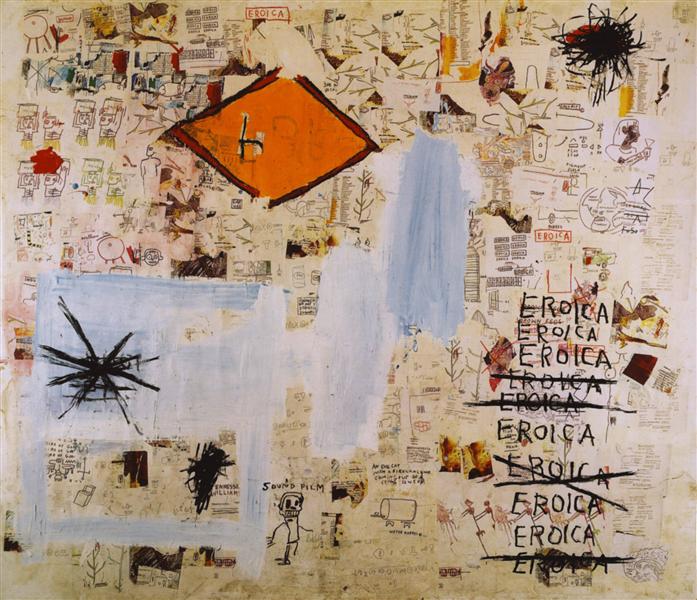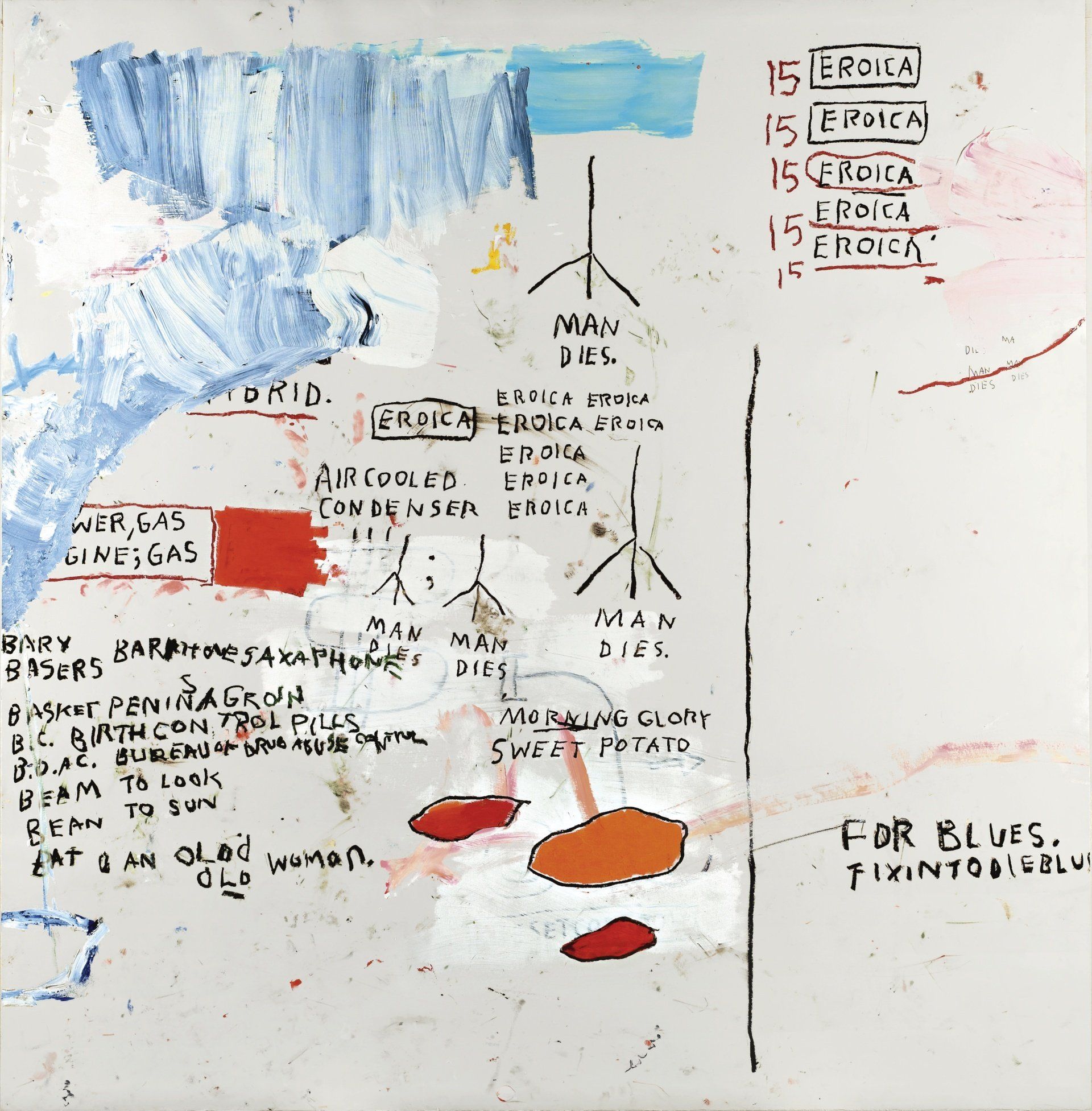Untitled (Eroica), 1986
Page 93 of Harry’s ABC of Mixing Cocktails by Basquiat features the word “Eroica” repeated six times. The complex use of this word in the artist’s work is frequently understood to be both symbolic of the dichotomy between heroism and anti-heroism, and also related to Beethoven’s masterwork, Symphony No. 3, Op. 55, 1803, in which the second movement is a funeral march. There are a number of significant works by Basquiat that feature this word, most notably Eroica, 1987, and the paintings Eroica I and Eroica II, both 1988.
As references to music, these works specifically connect to Gun as a musician and to their initial meetings at downtown music and nightclub venues, as well as to Basquiat’s passion as a musician himself and astute listener. Perhaps more telling, the 1988 paintings include repetitions of the Hobo symbol for danger and death, with a repetition of “Man Dies” beneath the signs, offering an insight into the artist’s struggle with drugs and an intimation of his own death. In 1996 and recently in recovery himself, Gun tried to help Basquiat with his addiction to heroin, imploring him to seek help.
In the catalogue of the exhibition, Words Are All We Have: Paintings by Jean-Michel Basquiat, curated by Dieter Buchhart at Nahmad Contemporary, New York in 2016 (Hatje Cantz, Berlin). Buchhart delved into the vital role language plays in Basquiat’s oeuvre: “Jean-Michel turned to letters, words, numbers, lists, and phrases as artistic material in his own works. They were an integral part of his art, using ‘words like brushstrokes.’ The curator Klauss Kertess fittingly remarked: ‘In the beginning of [Basquiat’s] creation, there was the word. He loved words for their sense, for their sound, and for their look; he gave eyes, ears, mouth – and soul – to words.’”
Janis Gardner Cecil




